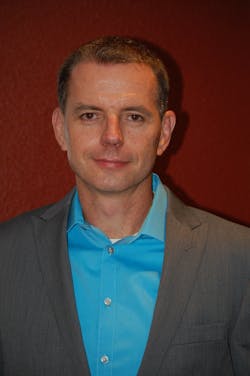Leadership Lessons: Confronting Conflict: Solving the Puzzle (Part 2)
Last month, we talked about understanding conflict. This month, we’ll tackle how to recognize, manage and prevent negative conflict.
Recognizing negative conflict
With the exception of physical altercations, which are pretty easy to spot, not all conflict is easily identifiable. I say this because two people yelling at each other does not necessarily equate to conflict. We all know at least one person in the fire service who cannot speak in a “normal” tone or someone who “invades” our personal space. Why do they do this and why do we not get offended? The answer is simple: Over time, we have learned to recognize the situation for what it is and the person for who they are. It’s Joe just being Joe. Simply put, knowing Joe gives us context, and context is the single biggest piece of the conflict-recognition puzzle. This is why so many of us actually miss the fact that we are involved in a conflict. We have no operational context for the situation, so we see the situation from a one-dimensional point of view. This is why other people often have to intervene to deescalate the situation. They have a different context and more of a three-dimensional point of view (aka context).
Although someone else intervening is a good thing, we need to develop our leadership toolbox to learn how to recognize and deescalate the situation without always requiring outside help, not to mention before the issue blows up in our face, friendships are damaged, or someone is subject to corrective action. No matter what conflict resolution text or paper you read, one common theme exists: Do not take it personally. Basically they are saying, leave your emotions out of it. To many, this is easier said than done; however, it is not impossible. The key to leaving your emotions out of it is leaving your ego behind.
You might be asking yourself how to leave emotions out of it. The answer is simple: training. Train yourself not to take it personally. Your organization must train you, your mentors must train you, and you must learn from your previous failures and mistakes.
Remember, when broken down into its rawest form, conflict is nothing more than two or more opposing forces converging at the same time. If you find yourself up against one or more forces, then you are engaged in some form of conflict.
Managing conflict
Managing conflict is not as simple as recognizing conflict. Keep in mind that you may not be able to deescalate the situation, but your actions can prevent it from escalating. If, despite your best attempts, the other person is doing everything they can to escalate the situation, the single biggest thing you can do is just smile, be nice and walk away. I refer to this as the “Road House Effect” (following Patrick Swayze’s advice in the cult classic to just “Be nice”). How many times have we all wished we would have just smiled and walked away?
Preventing conflict
Preventing conflict is both the easiest and the hardest part. It is the hardest if we have not been properly trained to recognize and manage it. It is easy if we have been trained or employ the Roadhouse Effect. With the right training, it is far easier to reach common ground and successful outcomes than if we had no real training at all.
In sum
Extinguishing a fire is Conflict Resolution 101. A fire wants to burn and destroy; we want to stop it (opposing forces). Sometimes we can employ the right strategy to prevent escalation; sometimes we have to leave the area and try another approach. When put into this context, I see zero difference in how we should manage conflict. Now the good and the bad news: There is no one right way to handle conflict, as conflict is too dynamic to solve in the context of one article.
To develop your leadership toolbox, your training must contain relevant scenarios and real-world case studies to drive home the point. If this is your organization’s approach, congratulations. If this is not your organization’s approach, then you must champion this change. Always remember, the unpopular champion of today is history’s greatest hero.
Stay low, stay safe and train everyday!
Last month’s installment of Leadership Matters was dedicated to John, Jennifer and John Kemp Jr. John Jr. was battling a rare neurological disease. Since that time, John Jr. has made a full recovery thanks to the devotion of his parents, family and friends, and the amazing medical staff at John Hopkins Hospital.
About the Author

Steven M. Gillespie
STEVEN M. GILLESPIE, Ed.D, started his fire service journey in 1993 and is a professor with Columbia Southern University’s College of Safety and Emergency Services, teaching fire service and leadership courses to current and aspiring leaders. Dr. Gillespie has held all ranks within the fire service, and has earned a doctor of education degree in organizational leadership and development and a master of science degree in executive leadership, a bachelor of arts degree in organizational leadership, and an associate of science in fire science technology.
